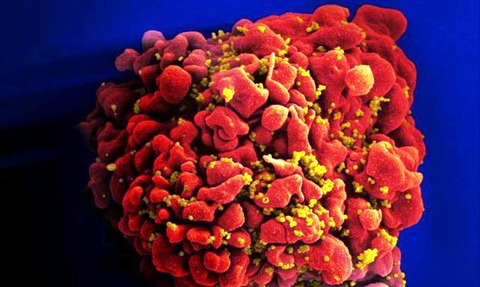Scientists cut HIV from human cells
23 Jul 2014

Removal of the HIV-1 virus from a person’s DNA could be the first step towards a cure for AIDS.
A team of researchers from Temple University of Medicine, US have made a significant breakthrough on the path towards a permanent cure for acquired immunodeficiency syndrome (AIDS) by designing a way to cut out integrated HIV-1 genes from human cells.
The study was published by Proceedings of the National Academy of Sciences on Monday.
As part of the study, lead researcher Kamel Khalili and his team created molecular tools to delete the HIV-1 proviral DNA.
“We want to eradicate every single copy of HIV-1 from the patient. That will cure AIDS. I think this technology is the way we can do it
Lead researcher Kamel Khalili
According to research, when deployed, the combination of a DNA-snipping enzyme called a nuclease and a targeting strand of RNA called a guide RNA (gRNA) hunt down the viral genome and excise the HIV-1 DNA.
Once the virus has been removed, the body’s own cellular gene repair machinery effectively solders the loose ends of genome back together which results in HIV-1-free cells.
“Since HIV-1 is never cleared by the immune system, removal of the virus is required in order to cure the disease,” said Khalili, who is also director of the Center for Neurovirology and director of the Comprehensive NeuroAIDS Center at Temple.
Though Khalili stresses that there is still a lot of work to do before the technique is marketable, the research does suggest that the molecular tools hold promise for use as a therapeutic vaccine in the future.
“It’s an exciting discovery, but it’s not yet ready to go into the clinic. It’s a proof of concept that we’re moving in the right direction,” Khalili said.
Currently, over 35 million people have contracted HIV worldwide and although highly active antiretroviral therapy (HAART) has controlled HIV-1 for infected people in the developed world over the last 15 years, the virus can resurface with any interruption in treatment.
To overcome these issues, the Temple researchers developed the two-part HIV-1 editor on a system that evolved as a bacterial defence mechanism to protect against infection, Khalili said.
Khalili’s lab engineered a 20-nucleotide strand of gRNA to target the HIV-1 DNA and paired it with Cas9. The gRNA targets the control region of the gene called the long terminal repeat (LTR). LTRs are present on both ends of the HIV-1 genome.
According to the research, by targeting both LTRs, the Cas9 nuclease can snip out the 9,709-nucleotides that comprise the HIV-1 genome.
Khalili said that his team’s editing process was successful in eradicating HIV-1 in several cell types that can harbour the virus.
Although Khalili has only removed the virus from a small number cells, he is optimistic that the technology can be scaled up.
“We want to eradicate every single copy of HIV-1 from the patient. That will cure AIDS. I think this technology is the way we can do it,” he said.

